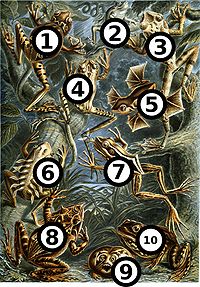Fitxer:Haeckel Batrachia (detail Gastrotheca ovifera).jpg
Aparença

Mida d'aquesta previsualització: 477 × 600 píxels. Altres resolucions: 191 × 240 píxels | 382 × 480 píxels | 611 × 768 píxels | 1.099 × 1.382 píxels.
Fitxer original (1.099 × 1.382 píxels, mida del fitxer: 403 Ko, tipus MIME: image/jpeg)
Historial del fitxer
Cliqueu una data/hora per veure el fitxer tal com era aleshores.
| Data/hora | Miniatura | Dimensions | Usuari/a | Comentari | |
|---|---|---|---|---|---|
| actual | 13:56, 26 feb 2018 |  | 1.099 × 1.382 (403 Ko) | Heinonlein | File:Haeckel Batrachia.jpg cropped 53 % horizontally and 58 % vertically using CropTool with precise mode. |
Ús del fitxer
La pàgina següent utilitza aquest fitxer:
Ús global del fitxer
Utilització d'aquest fitxer en altres wikis:
- Utilització a arz.wikipedia.org
- Utilització a ceb.wikipedia.org
- Utilització a en.wikipedia.org
- Utilització a eu.wikipedia.org
- Utilització a fr.wikipedia.org
- Utilització a nl.wikipedia.org
- Utilització a pl.wikipedia.org
- Utilització a ru.wikipedia.org
- Utilització a species.wikimedia.org
- Utilització a sv.wikipedia.org
- Utilització a uk.wikipedia.org
- Utilització a www.wikidata.org





